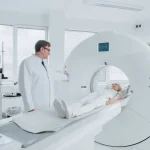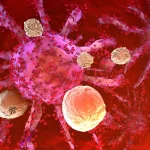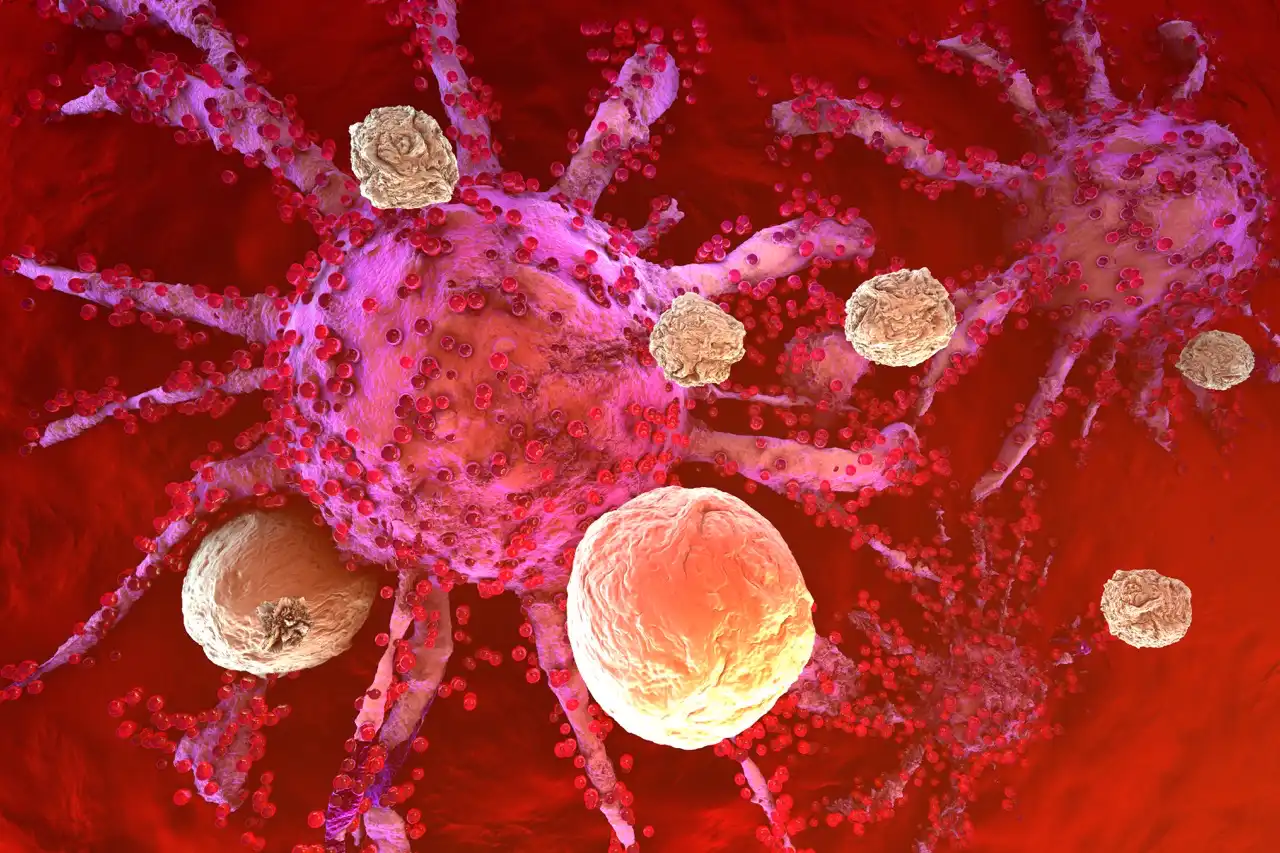For any questions:
What is radiotherapy?
Radiotherapy kills cancer cells through various mechanisms. If treatment is administered while a cell is reproducing, it prevents it from dividing and destroys it. Since cancer cells grow more rapidly than normal cells, radiotherapy eliminates more tumor cells than normal ones.
Radiotherapy is an extremely versatile form of treatment. For some types of cancer, radiation alone is sufficient to destroy the tumor. In other cases, it is used in conjunction with chemotherapy, hormonal therapy and surgery. Sometimes it is used before surgery to reduce the volume of the tumor, or after to prevent cancer cells multiplying once more.
External beam radiation therapy (EBRT)
Paragraph: EBRT is the most commonly used form of radiotherapy. A treatment apparatus is placed close to the body, which directs high intensity rays (mainly X-rays and high energy electrons) at the malignancy. The choice of beam type depends on the location of the mass to be treated.
EBRT is safe for those you come in contact with.
Internal radiation therapy (brachytherapy)

Brachytherapy is a type of internal radiotherapy in which a radioactive substance is introduced inside a cavity or directly into the malignant tumor. Implants may be permanent or temporary.
The advantage of this type of treatment is that it used to administer a high dose of radiation to the tissues adjacent to the radioactive source while sparing distant tissues. This is a more selective treatment than external radiotherapy.
In the majority of cases, the radioactive source is inserted only for the duration of the treatment. Most temporary implants use a high level radiation source. This means that the treatment is administered for a few minutes. When a temporary implant is used, there is no risk of spreading radiation to those around you after the source is removed.
Temporary implants will occasionally use a low level radioactive source. The treatment will last several hours and you will be hospitalized for the duration of the treatment in an isolated room in order to control exposure to radiation.
For patients receiving a permanent implant or an injection of a radioactive substance, there are precautions to be observed to reduce the risk of radiation to those around you and ensure the safety of others when you return home. Specific information will be provided upon your departure from the hospital.
Interstitial radiation therapy
This is a type of radiotherapy in which applicators are inserted directly inside the cancerous tissue. These applicators serve as vectors for the temporary introduction of a radioactive substance. On occasion, the radioactive substance is deposited directly inside the tissue, where it remains as a permanent implant.
Intracavitary radiation therapy
This is a type of internal radiotherapy in which an applicator containing a radioactive substance is placed inside a body cavity such as the vagina or the uterus.
Radiation therapy planning
Simulation is the first step in radiation therapy planning. The position in which you will receive your treatment is determined during the simulation, and immobilization casts will be made if required. The simulation can be performed in two ways: with the use of a simple X-ray machine, defining the treatment field and proceeding immediately with marking at the same time, or by performing a CT scan, which consists of creating detailed three-dimensional images of selected parts of the body.
When a CT scan is completed, the radiation oncologist determines, on the basis of the images obtained, the volume to be treated depending on the location of the tumor and where it is most likely to spread. He then decides the treatment fields and studies the optimal dosage to ensure that areas at risk are treated, while sparing healthy tissue as much as possible. It is only after these steps have been completed that you will be contacted to proceed with marking.
Number of required radiation treatments
The total dose of radiation required and the number of days of treatment depend on several factors, such as the type of tumor, its stage, your overall health, or what other treatments you are receiving. The dose is usually expressed in centi-gray (Ggy) units of absorbed radiation.
Typically, treatments are given five days a week, Monday to Friday, and last for four to six weeks. If your treatments are spread out over several weeks, you will probably receive treatment daily (sometimes twice daily), five times a week. This is done to protect normal tissues.
Progress of the radiation therapy
When you enter the treatment room, you will be greeted by a radiotherapy technologist. Using the markers traced on your skin, you will be positioned under the treatment apparatus. It is very important not to move during exposure to radiation in order to ensure that the treatment is administered to the same area every time.
The radiation therapy technologist does not stay in the room while the machine is running. He or she will observe you from an adjacent control room and will remain in constant communication with you via a microphone. If you are overcome by a feeling of anxiety, remember that you are under constant medical supervision.
Examinations during treatment
During treatment, your doctor will examine you regularly. He may order blood tests in order to check the effect of the radiation on your blood cells. If your white blood cell count is too low, treatment will be delayed until it is higher. This does not mean your condition is worsening.
Your doctor may also prescribe other specific tests for problems you may present. Some side effects require special review and appropriate medication. Generally, no X-ray control tests are performed during the radiation treatment. The first radiological controls for evaluating your response to treatment will be carried out once all the radiotherapy sessions are complete.
Side effects of radiation therapy
Just like tumors, healthy tissues that divide more quickly, such as the oral or intestinal mucosa, may be affected, causing some side effects to the radiotherapy. Such effects do not always occur and their severity depends on the individual patient, the type of cancer, the radiation dose and most of all on the region that is irradiated.
Side effects appear only after a number of treatments, usually after the tenth. Early effects occur during treatment and usually disappear within a few weeks after the end of treatment. It may take months or years for late side effects to arise, and these are generally permanent.
The most common early side effects are:
For information about other side effects
To find out more
To obtain more detailed information on radiotherapy and some tips on how to feel better, call the Info-cancer Hotline at 1-800-363-0063 to talk to a nurse or documentalist or read our brochure (french only).
Borrow one or more books on the subject free of charge from our Info-cancer Library (in French only).





































